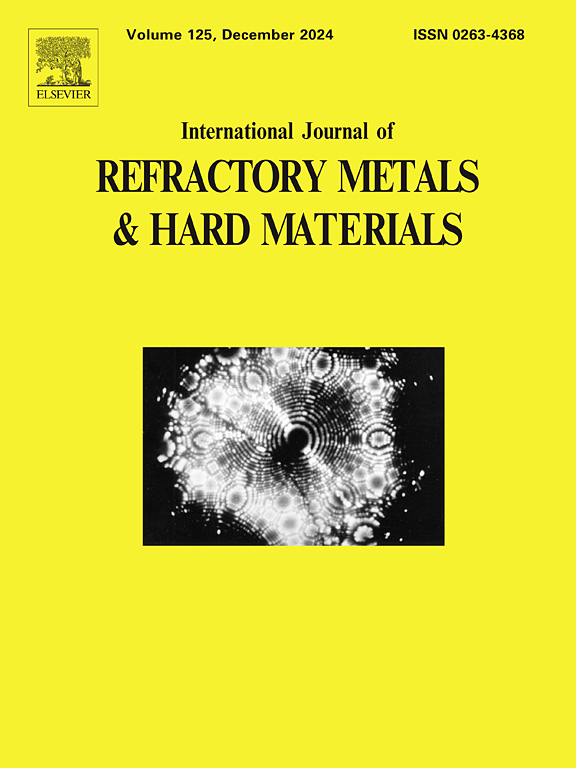Effects of different post-processing temperatures on the microstructure and mechanical properties of TiC-Ni cermets fabricated by selective laser melting
IF 4.2
2区 材料科学
Q2 MATERIALS SCIENCE, MULTIDISCIPLINARY
International Journal of Refractory Metals & Hard Materials
Pub Date : 2025-02-13
DOI:10.1016/j.ijrmhm.2025.107097
引用次数: 0
Abstract
Selective laser melting (SLM) combined with post-processing is a common method for fabricating complex-shaped cermets components. This study utilized SLM-fabricated samples and employed vacuum sintering as a post-processing technique to investigate the effects of different post-processing temperatures (1350 °C, 1375 °C, 1400 °C, 1425 °C, 1450 °C) on the microstructure and mechanical properties of TiC-35 wt% Ni cermets. The results showed that using SLM printing parameters of 240 W laser power and 300 mm/s scanning speed produced well-formed samples. As the sintering temperature increased, the sintering mechanism gradually transitioned from solid-phase sintering to liquid-phase sintering. Relative density, hardness, bending strength, and fracture toughness showed a trend of first increasing and then decreasing. At 1400 °C, peak values were achieved: 97.7 % relative density, 82.7 HRA hardness, 901.8 MPa bending strength, and 8.72 MPa·m1/2 fracture toughness. Beyond this temperature, excessive grain growth and an increase in the brittle Ni3Ti phase led to a decline in mechanical properties. Vacuum sintering could be a promising post-processing technique for eliminating SLM-related defects and enhancing mechanical properties.
求助全文
约1分钟内获得全文
求助全文
来源期刊
CiteScore
7.00
自引率
13.90%
发文量
236
审稿时长
35 days
期刊介绍:
The International Journal of Refractory Metals and Hard Materials (IJRMHM) publishes original research articles concerned with all aspects of refractory metals and hard materials. Refractory metals are defined as metals with melting points higher than 1800 °C. These are tungsten, molybdenum, chromium, tantalum, niobium, hafnium, and rhenium, as well as many compounds and alloys based thereupon. Hard materials that are included in the scope of this journal are defined as materials with hardness values higher than 1000 kg/mm2, primarily intended for applications as manufacturing tools or wear resistant components in mechanical systems. Thus they encompass carbides, nitrides and borides of metals, and related compounds. A special focus of this journal is put on the family of hardmetals, which is also known as cemented tungsten carbide, and cermets which are based on titanium carbide and carbonitrides with or without a metal binder. Ceramics and superhard materials including diamond and cubic boron nitride may also be accepted provided the subject material is presented as hard materials as defined above.

 求助内容:
求助内容: 应助结果提醒方式:
应助结果提醒方式:


